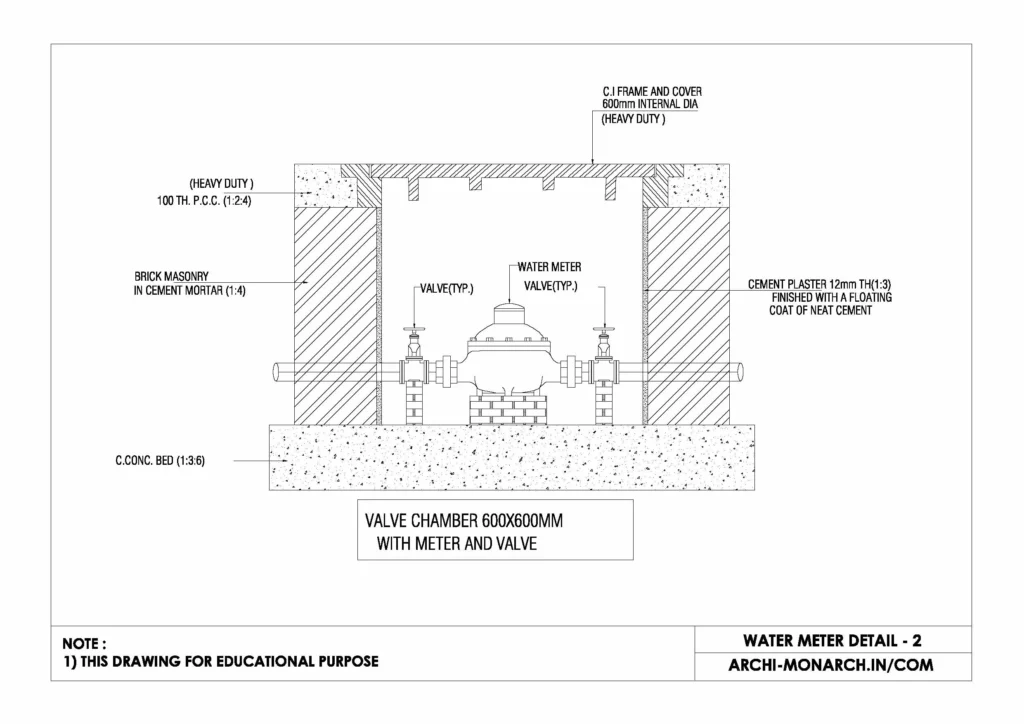A water meter in architecture is a device used to measure the amount of water used by a building or structure. It is typically installed on the main water supply line and measures the flow of water in gallons or cubic feet.
This information can be used for billing purposes, as well as for monitoring and managing water usage in the building. Water meters can also be used to detect leaks and other issues with the building’s plumbing system.
If you want to know about the interior detail or gate detail or landscape detail, please click the link.
Image of water meter detail and downloadable (in DWG) link below

Water meter chamber detail drawing – 2
A water meter chamber detail drawing is a technical drawing that shows the specific details and dimensions of the chamber that houses a water meter.
This can include the size and shape of the chamber, the materials used to construct it, the location of the meter within the chamber, and any other relevant details such as access points, ventilation, and drainage. The drawing may also include information on the connections between the chamber and the water supply and distribution systems.
This type of drawing is typically created by a plumbing or mechanical engineer and is used by contractors and builders to ensure that the chamber is properly installed and meets all necessary codes and regulations.
In addition to the information previously mentioned, a watermeter chamber detail drawing may also include:
- The type of water meter being used, such as a mechanical or digital meter
- The size and type of piping that will connect the water meter to the main water supply line
- The location of shut-off valves and other control devices within the chamber
- The type and size of any electrical or electronic components that may be required, such as a remote reading device
- The specific location of the chamber in relation to other building systems, such as the sewer line or the electrical service
- The type of foundation or base required for the chamber and any specific requirements for the surrounding area such as drainage.
It is important to note that the detail of the drawing may vary depending on the complexity of the project and the requirement. The detail drawing can be accompanied by the general layout drawing, plan, elevation, and section drawing.
Our tips to help you improve your architectural water meter detailing.
